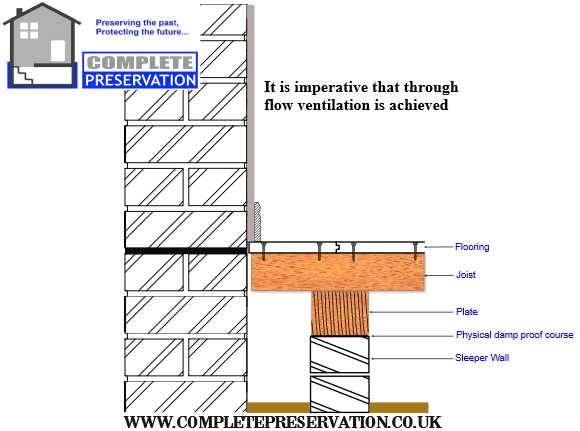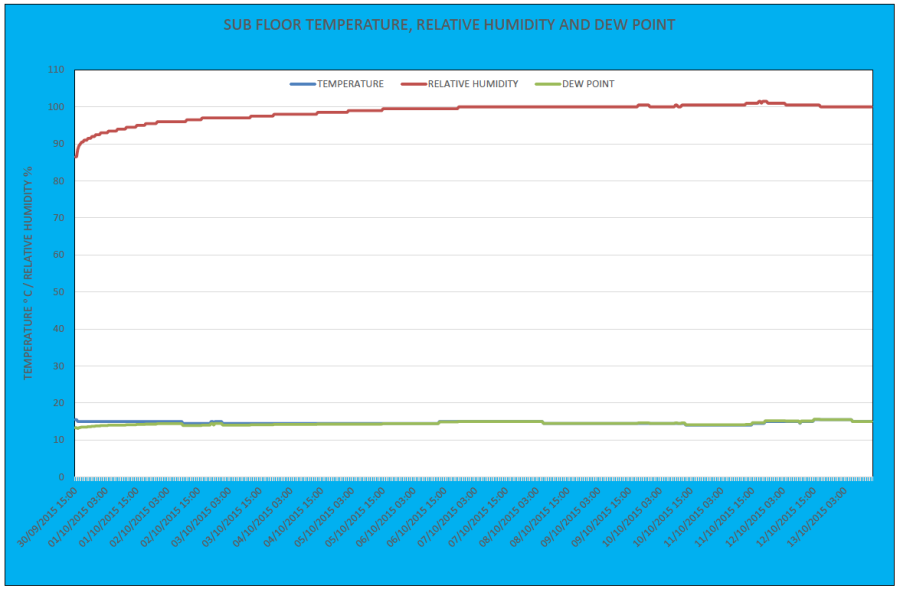
Professional suspended timber floor surveys
By: admin | Posted on: May 20, 2020
I often get asked how much does it cost to inspect a floor, and also how can it be surveyed if fitted floor coverings are present. Suspended timber floors are very difficult to survey on a pre purchase survey if the surveyor isn’t able to lift any floorboards to inspect the sub floor. Lots of properties now have laminate floor coverings or vinyl floors stuck down in kitchens, or even tiled, which no vendor would wish to lift to faciliate a full sub floor investigation.
Most surveys the surveyor will often do a bounce test to the floors where they will jump on the floor to feel how firm it is under the foot, if the floor is carpeted it maybe possible to stick a damp meter into the timber and measure the moisture content of the timber, and look at the levels of the floors to see if the floor has dropped in places etc. We also use hammer probes that can go through carpets and floorboards to measure moisture content of joist ends.
A surveyor will also see how many, and the location of air bricks, and also note ventilation pathways. For example if the property is a middle terrace with a living room and dining room, with a new build kitchen at the rear incorporating a solid floor, this would be restricting cross flow ventilation pathways if there is no ducting present through the new solid floor. It is common for builders not to incorporate ducting from the timber suspended floor through the new solid floor to ventilate out. See diagram below.

So what can you do to take the survey a step further?
A hammer probe can be used to check the moisture content of the surface of the timber through a carpet and also through into the timber joist. A good place to check to find a loose floorboard to lift is the under stairs cupboard or a built in cupboard typically by the fireplaces. It maybe possible to drill a small hole in a floor board and view the floor with a high powered boroscope. Sometimes it is possible to remove an air brick and insert a snake camera system, and our high resolution CCTV drain camera where we can also photograph and video the defects for the report.


We also use where a possible a remote control car that has lighting and a video camera installed that can reach hard to access areas.
In an ideal world many of the floorboards would be lifted so you can actually visually check the floorboards, joists and plates. Cellar fungus decay typically leaves a thin surface veneer, and it’s not until you drive a bradawl into the timber you notice how significant the decay actually is.
Why is ventilation important?
Ventilation is paramount to prevent decay and woodworm infestation, fungal decay and woodworm need moisture to survive, without this they will not survive. Timber is naturally hygroscopic, this means it will absorb moisture from the surrounding air. Suspended timber floors are cold places, with cold temperatures subsequently there will be high relative humidity readings. Older historic properties are more likely to have a hardwood flooring timbers, this is less prone to decay and infestation unlike modern fast grown softwood. Most of the really active woodworm infestations I find are where the floor is a softwood, some of these floors have been dangerous and have collapsed.
The below picture shows a severe active woodworm infestation, this was in a property in Trowbridge Wiltshire.

The fungal decay is a dry rot, this is from the sub floor which consisted of new pre treated timber, the ends of the timber were not treated hence thats where it appears the rot has started. This dry rot was in a suspended timber floor in Wiltshire.

See the graph below that we produce in excel, we also use this data logging for the internal environment typically for condensation and mould surveys. Where the green and the blue line cross shows when condensation is occurring, the floor was virtually suffering from condensation during the whole time it was being monitored. This is why there was severe timber decay issues.

Sub floor condensation is where water droplets are dripping actually off the floorboards. Below is a picture of a sub floor condensation issue, and there is also a significant dry rot issue, this was caused because there was a lack of sub floor ventilation in this property situated in Devizes Wiltshire.

The below picture shows sub floor condensation issue and early signs of wet rot fungal decay in a property in Trowbridge Wiltshire.

The two below graphs show data logging of the sub floor void, this is measuring cross flow ventilation from the from and the back of the house. This is carried out using a calibrated anemometer, looking at the graph you can see how this went up and down because of the wind, even in that short space of time. This showed there was adequate cross flow ventilation in the sub floor void.


Another thing that some people fail to realise is that the suspended timber floor void can also be partly controlled by the internal environment, if you have very high vapour pressure in the building because of poor mechanical ventilation as this will go to low vapour pressure, like the roof void and also the sub floor. You can also find in suspended timber floors that when you have earth beneath them that is damp / wet, the vapour pressure in the sub floor void will be higher than in the house.
A really important thing to remember that hardly ever gets considered is the fact that damaged drains, and also how waste water discharges into the the gulley. As you can imagine the amount of moisture these defects produce are often enough to cause such serious issues with the floor, complete replacement is needed. Many jobs I get involved in, are to fix other contractors works, where the actual root causes haven’t been identified in the first instance. The reason this occurs is because free damp and timber surveys, and dry rot surveys, and even damp and timber surveys where a fee is paid, these basic root causes of moisture are not always inspected. Some contractors try to win work, by being cheaper and the client is under the impression that the works is still being carried out correctly.
The video below shows some tips, and common problems that many homeowners have. It is imperative that you identify the basics like in this video, as you will see the timber decay / rot issue, and also the costs involved can be very expensive.
I often get asked about if timber treatment for woodworm, and timber decay is necessary. This can be a difficult subject for a layperson because you will find two camps. One say that timber treatments will be needed in certain conditions, and the others say it is never needed. I’ve spent many years monitoring buildings where data has been collected, and also where I have infested timber with woodworm. I will be doing a video and blog post on this shortly after 4 years of data collection, and what it shows is that some areas of a building will need some form of intervention because these are at risk.
If you need a sub floor survey / camera sub floor survey / investigation for woodworm or dry rot / wet rot please contact us and we would be happy to assist you. If you need a CCTV drain survey to check whether this could be causing dry rot to your suspended timber floor, this is something we can help you with also. We also offer specialist controlled drying of suspended timber floor voids, to bring them back to equilibrium, to ensure timbers are out of the risk zone.
Contact us to discuss options on 01225 769215
Or email enquiries@completepreservation.co.uk
